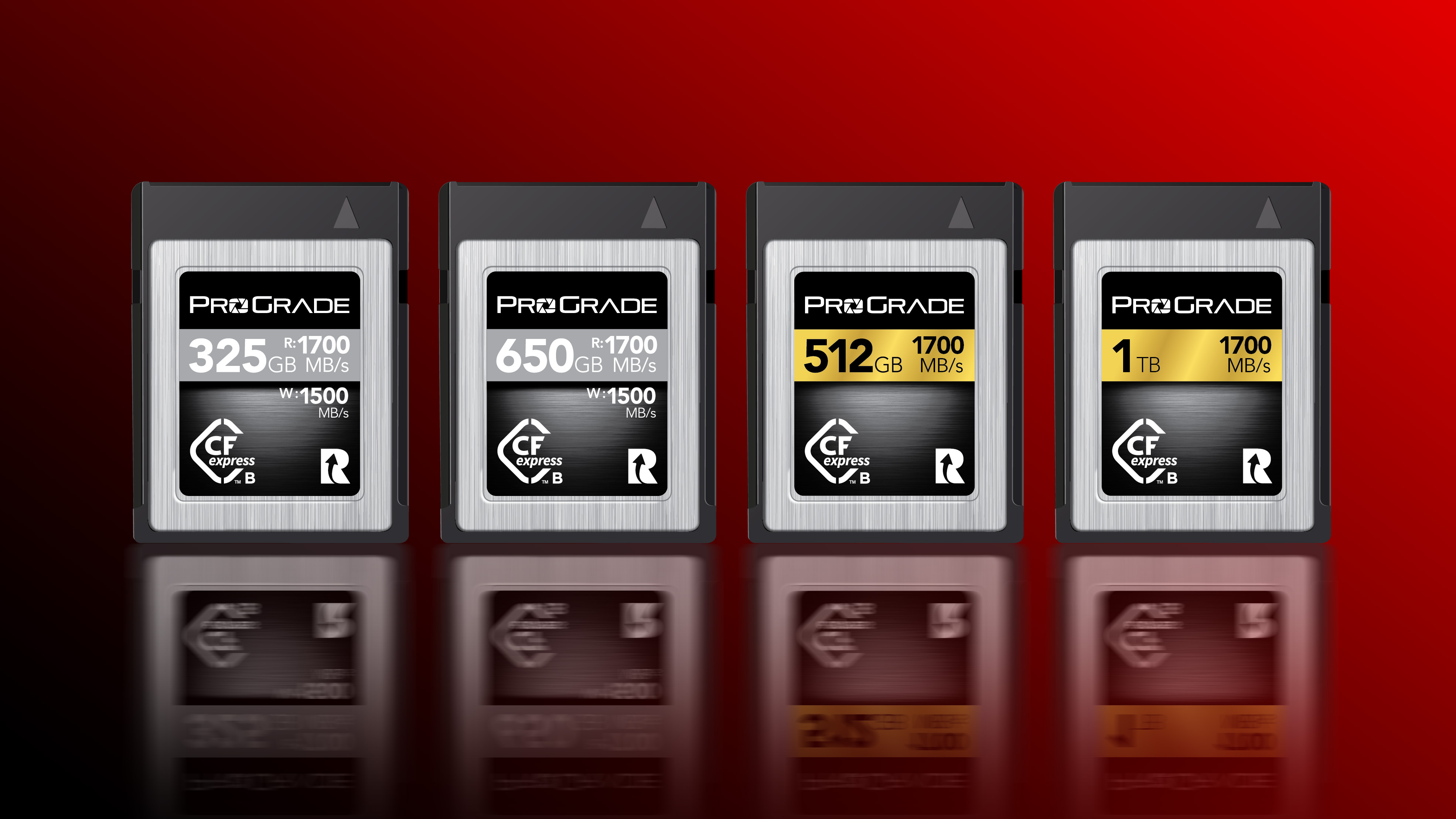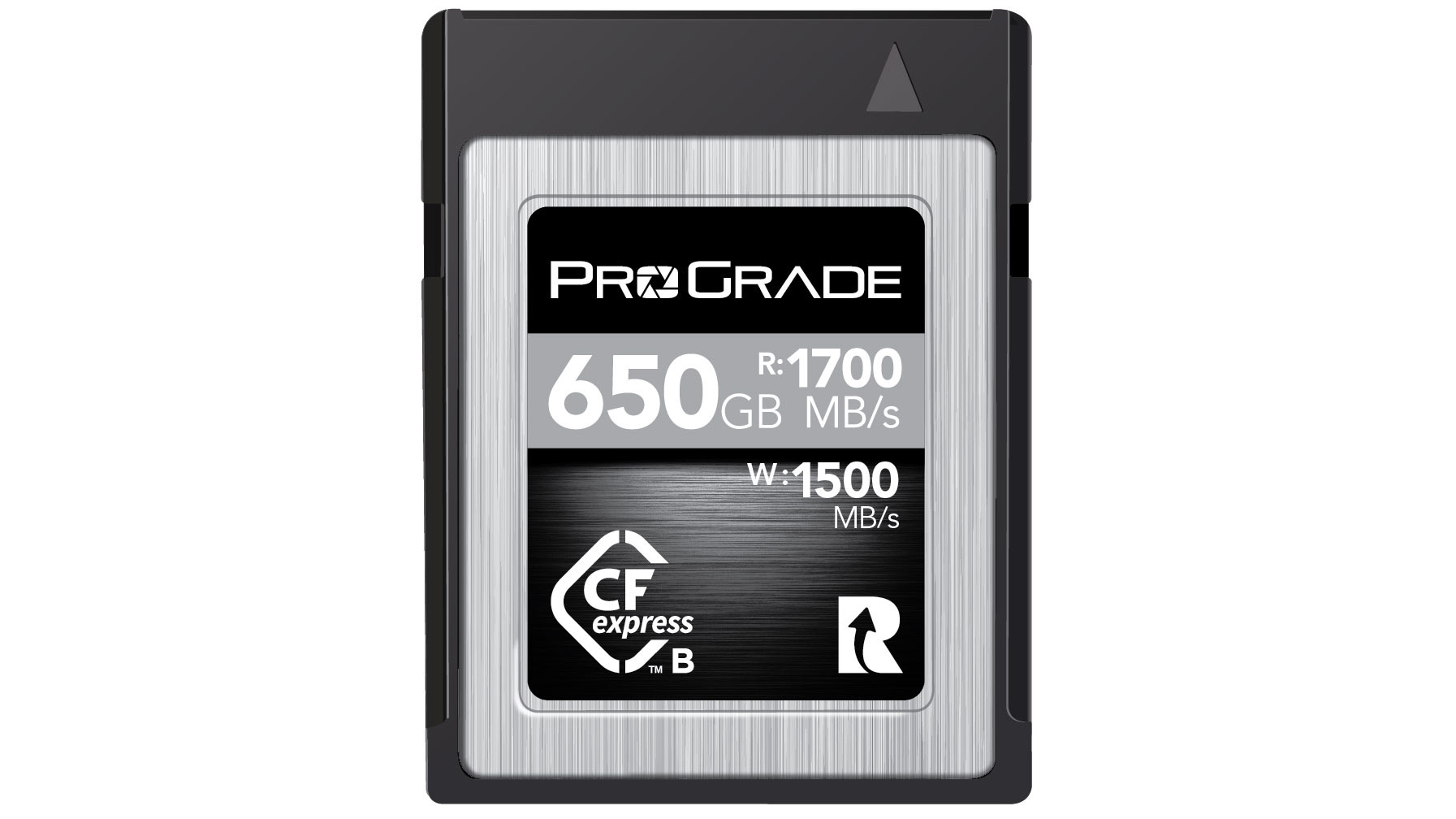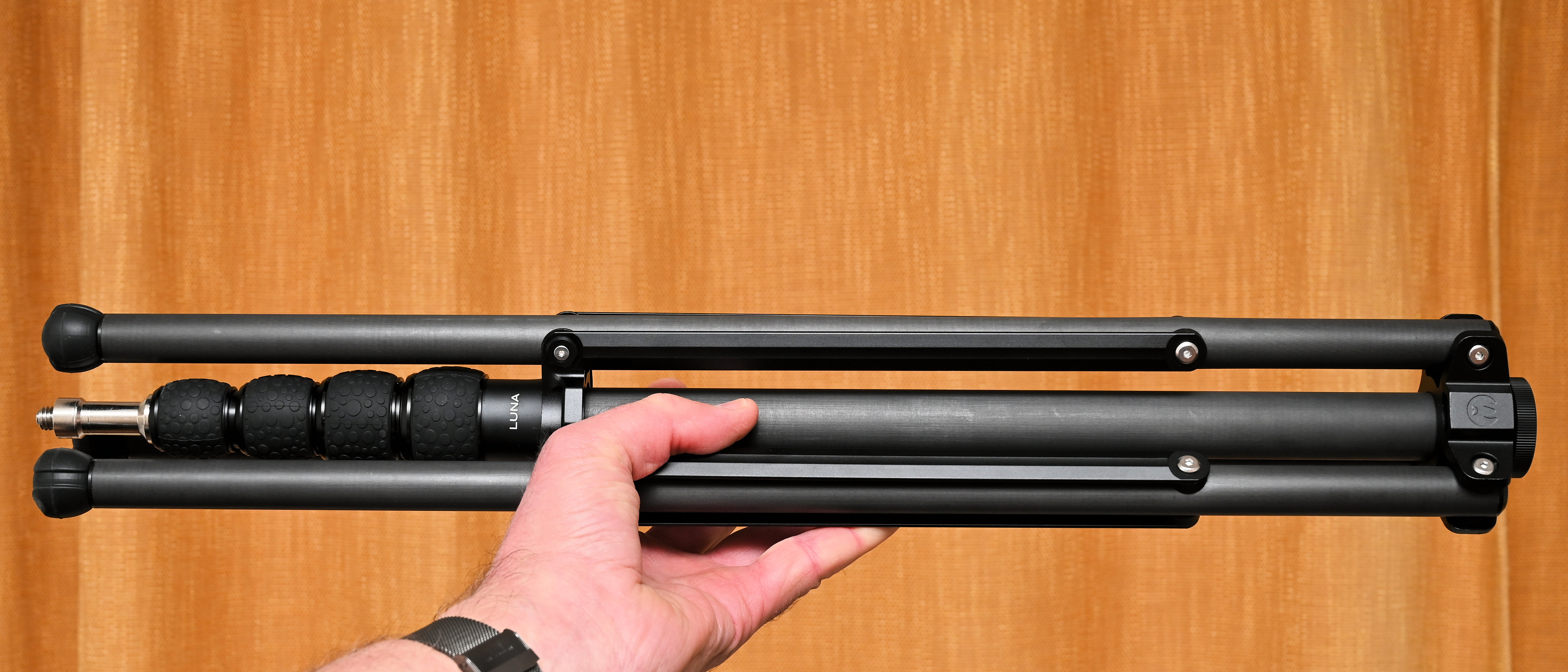ProGrade Digital supercharges its latest CFexpress cards
CFexpress is now the memory card format to watch, with ProGrade's latest cards setting new performance standards

ProGrade Digital was one of the first companies to champion the CFexpress card format. Now it's being supported by heavy-hitters like the Canon EOS-1D X Mk III, Nikon D6, Nikon Z6 and Z7, as well as the Panasonic Lumix S1 and Lumix S1R, ProGrade has released new, faster CFexpress cards to keep pace.
Whereas ProGrade's original CFexpress offerings boasted up to 1600MB/s read speed, the new cards boost this slightly, to 1700MB/s. However, the big news is the increase in write speed. Burst write rates are now up to 1500MB/s, and most impressive of all, ProGrade's top-tier Cobalt CFexpress cards can manage an incredible minimum sustained write speed of 1400MB/s. To put this in perspective, Lexar's latest Professional CFexpress™ Type B Card may be capable of a slightly faster 1750MB/s read speed, but it can only manage a sustained write speed of up to 1000MB/s.

ProGrade's new CFexpress cards come in two flavors: Cobalt, and Gold:
| Header Cell - Column 0 | Cobalt | Gold |
|---|---|---|
| Maximum read speed | 1700MB/s | 1700MB/s |
| Burst write speed | 1500MB/s | 1500MB/s |
| Minimum sustained write speed | 1400MB/s | 400MB/s |
| Capacities | 325GB, 650GB | 128GB, 256GB, 512GB, 1TB |

All Cobalt and Gold ProGrade CFexpress cards feature:
- Fully compliant with CompactFlash™ Association 2.0 specification
- NVMe host interface with PCIe Gen3 X2 interconnect
- Extended battery life and low standby power through NVMe PS0 – PS4 support
- Metal enclosure for improved durability and heat dissipation
- Thermal throttling to protect the card from overheating
- Unique serialized tracking of every card enabling identification of key components and manufacturing data for the highest quality control
- Rigorous 100% full card testing down to individual memory chips for optimal quality
- X-ray proof, shock-proof
- Temperature ranges: operating 14 to 158°F/ -10 to 70°C; storage -4 to 185°F/ -20 to 85°C
- 3-year warranty
The only potential cloud on the horizon here is that while you may be able to fully exploit the maximum speed of these cards in some cameras, transfer rates to a computer is likely to be slower. As we found when testing Sandisk's Extreme Pro CFexpress card reader, even the fast USB 3.1 Gen 2 interface simply can't keep up with the insane CFexpress speeds now possible.
Read more:
The best memory card for your camera
Get the Digital Camera World Newsletter
The best camera deals, reviews, product advice, and unmissable photography news, direct to your inbox!
SanDisk Extreme Pro CFexpress Type B Card and CFexpress Card Reader review
Ben is the Imaging Labs manager, responsible for all the testing on Digital Camera World and across the entire photography portfolio at Future. Whether he's in the lab testing the sharpness of new lenses, the resolution of the latest image sensors, the zoom range of monster bridge cameras or even the latest camera phones, Ben is our go-to guy for technical insight. He's also the team's man-at-arms when it comes to camera bags, filters, memory cards, and all manner of camera accessories – his lab is a bit like the Batcave of photography! With years of experience trialling and testing kit, he's a human encyclopedia of benchmarks when it comes to recommending the best buys.

